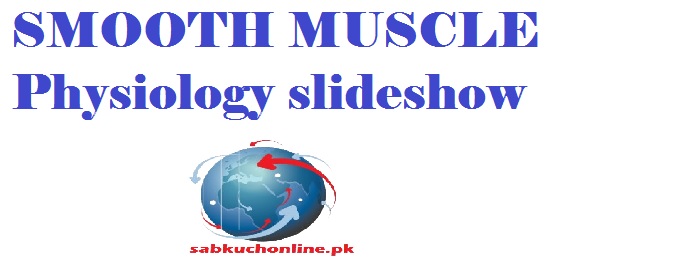Learning Objectives
• At the end of the lecture the student should be able to:
• Discuss the generation of action potential in smooth
muscle.
• Differentiate slow wave potential and spike potential.
• Discuss the action potential with plateau.
• Discuss the local tissue factors and hormones to cause
smooth muscle contraction.

Review of previous lecture
Excitation-Contraction Coupling


Latch Mechanism

ACTION POTENTIAL IN SMOOTH MUSCLE
Membrane Potentials in Smooth Muscle -50 to -60 millivolts,
(1)spike potentials
or
(2) action potentials with plateaus.

Spike Potential
Electrical stimulation,
Action of hormones
Action of transmitter substances
By stretch,
Spontaneous generation in the muscle fiber itself
Action Potential with Plateau
The onset is similar to that of the typical spike potential.
However, instead of rapid repolarization of the muscle fiber membrane,
the repolarization is delayed for several hundred millisecond to as much as 1 second.

Slow Wave Potential
In some smooth muscles , action potentials arise within the smooth muscle cells themselves without an extrinsic stimulus.
This often is associated with a basic slow wave rhythm of the membrane potential.
Slow Wave Potential
It is a local property of the smooth muscle fibers.
CAUSE:
1.Waxing & waning of the pumping of Na ions
2.Conductance of the ion channels increase & decrease rhythmically
Slow wave potentials

Pacemaker potentials

SINGLE MUSCLE TWITCH

•Role of calcium sodium and potassium channels
•Role of Oxygen, Carbon dioxide and hydrogen ions.
•Angiotensin, oxytocin, vasopressin
Review
Differentiate
•Action Potential in Skeletal Muscle
•Fast fibers
•EC coupling in skeletal Muscle
•Myasthenia gravis
•Spike potential
•Action potential in smooth muscle
•Slow fibers
•EC coupling in smooth muscle
•Rigor mortis
•Slow wave potential
•Complete tetanus
•Multiple fiber summation
•Isotonic contraction
•Single unit muscle
•Motor end plate
•Tetany
•Incomplete tetanus
•Frequency summation
•Isometric contraction
•Multi-unit muscle
•Motor unit
•Tetanus
•Calmodulin
•Muscle Hyperplasia,
•Or Atrophy
•Contraction in skeletal muscle
•Relaxation in skeletal muscle
•Contractile unit in skeletal muscle
•Calsequestrin
•Muscle Hypertrophy
•Contraction in smooth muscle
•Relaxation in smooth muscle
•Contractile unit in smooth muscle
•Structural and functional difference in of skeletal and smooth muscle
